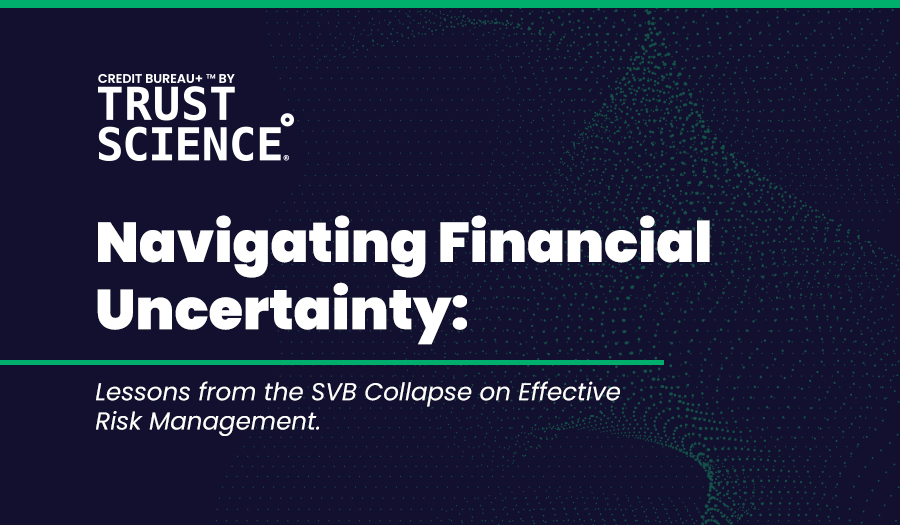Trust: The Foundation of Credit
Before we get too far into the concept of credit scoring, let’s understand what it ultimately is trying to measure: creditworthiness, an extremely difficult quality to judge fairly and quantify. In the context of loans and credit, that task seems remarkably daunting, but if we replace the words with borrowing, as in back in grade school “can I borrow a pencil?”, suddenly it doesn’t seem all that complicated.
When you are choosing to lend your pencil to your classmate, there’s a couple of questions you consider: Will they return it when I need it back? How likely are they to lose it, or break it, or chew on the end to the point that I no longer want the pencil back?
You might have an idea as to your classmate’s reputation for things like this, or you might have a quick moment to glance around the room for a quick look of approval from a friend that has lent a pencil to your classmate before. But at the end of the day, that conversation boils down to trust: how much can you trust that your classmate will be a good borrower?
In early lending, that was about all there was to it: a quick gut feeling of “Can I trust you?”, maybe backed up by a few phone calls around the area for a reference. For obvious reasons, that isn’t good enough: there’s too much room for bias, for error, and, ultimately, for people to make the wrong decisions for the wrong reasons… or to not find any data at all.
Quantifying Trustworthiness: The Birth of Credit Scoring
In 1956, engineer Bill Fair teamed up with mathematician Earl Isaac to create Fair, Isaac and Company (now FICO) with the goal of creating a standardized, impartial credit scoring system. By 1958, they began selling their manual scorecard-style credit scoring system. The system was, of course, imperfect, and was redeveloped into its current form in 1989. The FICO scores have since become the industry standard, with the recently (2006) developed VantageScore entering the market with the backing of the three major bureaus (Equifax, TransUnion, Experian). In theory, these scores provide what they were originally created to do: score everyone on the same, impartial set of metrics.
So What Goes Into the Number?
Conventional scores (FICO and Vantage (and the Beacon in Canada)) use five key factors to determine your creditworthiness:
- Payment history;
- Amounts owed;
- Length of credit history;
- Types of credit used; and,
- Recent “hard pull” credit inquiries.
Seems Fair Enough… Why Do We Need Alternative Scoring?
In the paraphrased words of VP Harris, and in a push for credit reform met with bipartisan support, the traditional credit scores still have disproportionately negative effects on marginalized populations, even if they would behave in the same manner as a prime borrower.
Structurally, it comes down to a catch-22 inherent in the scoring system: since the scores only look at your credit behavior, you must have had some sort of credit in order to develop a credit score. Conversely, you must also have a credit score in order to get credit. For those sitting outside of the credit market, even those that are very financially responsible, building up a good credit score is incredibly difficult.
It’s not just racialized demographics that are affected either: younger generations face many challenges with the traditional system as well. Aside from the obvious roadblock that younger people will not have a lengthy credit history, younger generations are also later into the home ownership market due to a number of generational factors, including staying at the family home longer and a general preference to rent. As a result, many Millennials and Gen-Z borrowers will not have a mortgage, which is the traditional system’s most coveted form of credit.
The problem is so large that, according to this 2015 CFPB study, as of 2010, 26 million consumers were credit invisible, with a further 19 million consumers with unscorable records, collectively accounting for approximately 20% of the American population at the time. More recent figures suggest that number, plus those with inaccurate credit scores, may actually be upwards of 1/3 of the American population. That means that lenders are missing out on a large number of potential high-quality borrowers, and that a lot of people are missing out on the loans they deserve. To fix the problem, we need to expand our definitions of creditworthiness and use more financially inclusive data. In other words, we need alternative credit scoring.
Okay, I’m Convinced. So What is Alternative Credit Scoring?
As the name suggests, alternative credit scoring is any credit scoring system that presents an alternative to the traditional system. What it really means, though, is that credit scores are derived from a number of alternative data sources, including rent payments, phone bills, and utility bills. The problem is that a lot of this data is unstructured and out of the view of the major credit bureaus, and much too difficult for manual input. That is why the use of compliant and explainable AI is critical to the proper execution of alternative credit underwriting, allowing for the input of thousands of data points to provide a highly accurate credit score.
Of course, not all data is useful. Sometimes, bad data can create a lot of meaningless static and might even create algorithmic biases. However, a highly trained analytics team will make sure that is not the case in order to deliver a powerfully predictive credit score. And by using more data points, the better the odds that a powerful insight on a credit applicant will turn up, leading to increased financial inclusivity.
In other words, alternative data and alternative credit scoring helps deserving people get what they deserve, and that is what Trust Science and Credit Bureau + are all about.






